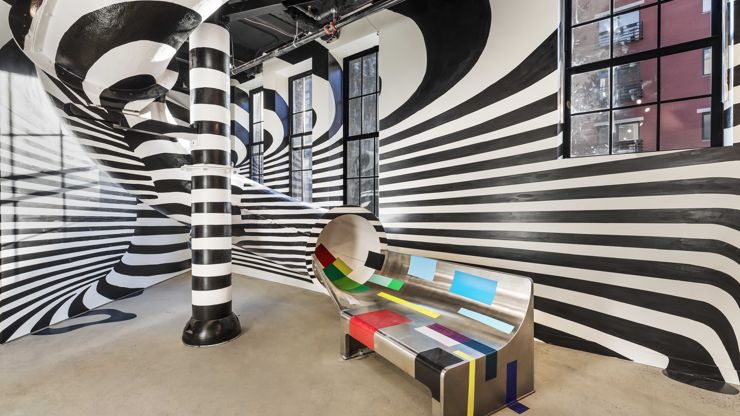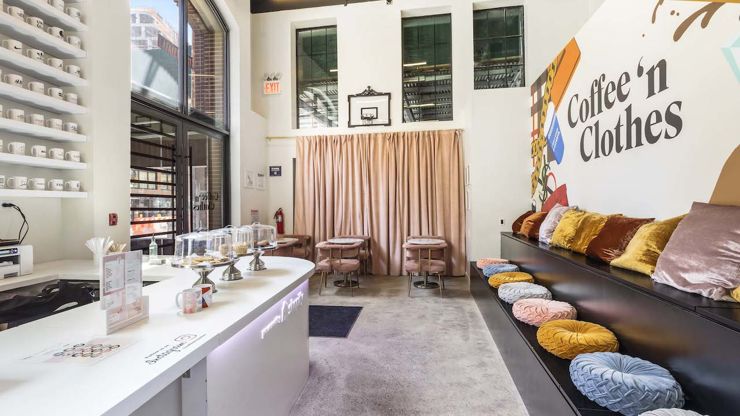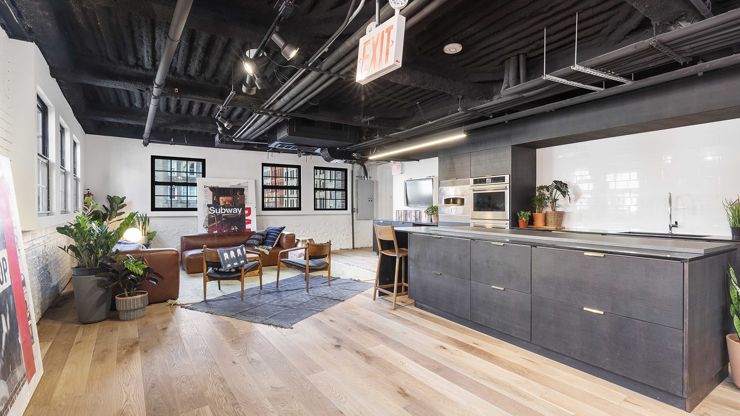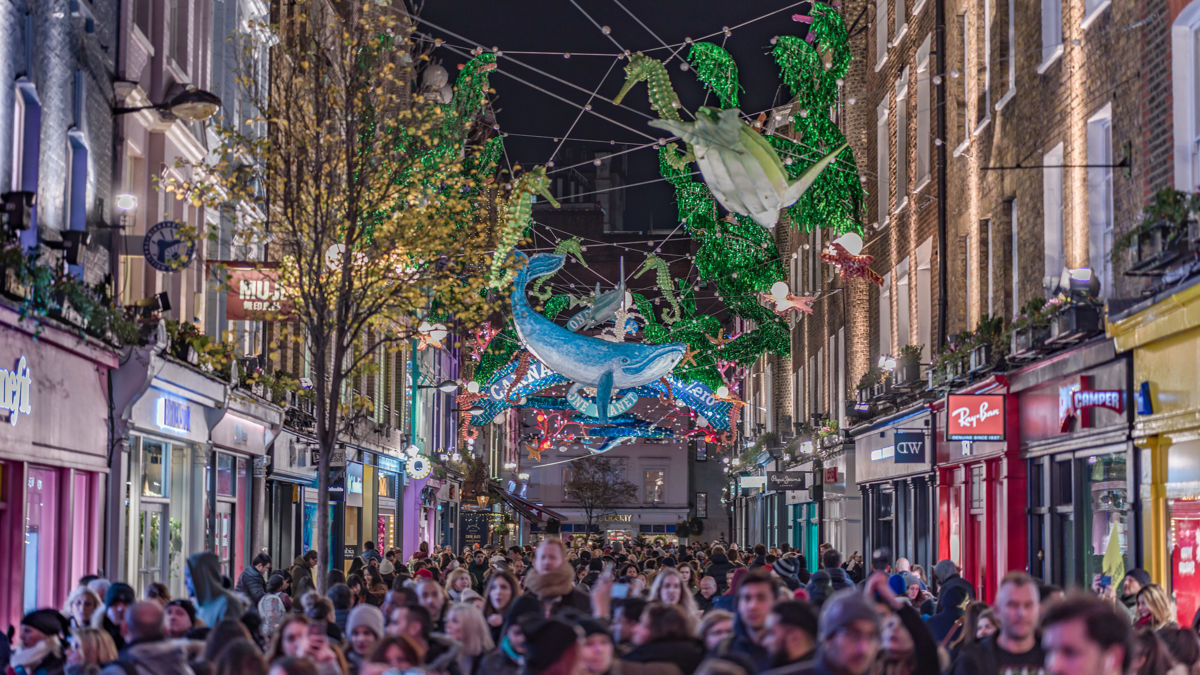The health of the high street
With Topshop and Debenhams the latest in a long line of the UK's household names closing the doors to their bricks-and-mortar stores, Selena Schleh investigates whether it’s a terminal diagnosis for the high street, or if brands can find a cure.
Is the British high street really dead? Battered by a series of brutal lockdowns which have forced ‘non-essential’ shops to close for months and driven consumers online, the prognosis is certainly grim.
Every week sees the shutters come down on yet another once-beloved retailer: according to Retail Gazette, over 2,800 stores shut in the first half of 2020 alone, a trend that’s continued into 2021, with Debenhams and Topshop set to close all physical outlets following their respective sales to ecommerce behemoths Boohoo and Asos.
While the high street might not be bagged and tagged just yet, it’s certainly hooked up to life support in the ER.
Even when lockdown lifts and life returns to some semblance of normal, it’s unlikely to be business as usual for the high street, due to huge shifts in consumer behaviour. Last year, internet sales accounted for 36 per cent of all retail sales, a share that’s set to grow as we continue to embrace the convenience of online shopping. Working from home is also here to stay in some form, further reducing footfall in town centres. While the high street might not be bagged and tagged just yet, it’s certainly hooked up to life support in the ER.
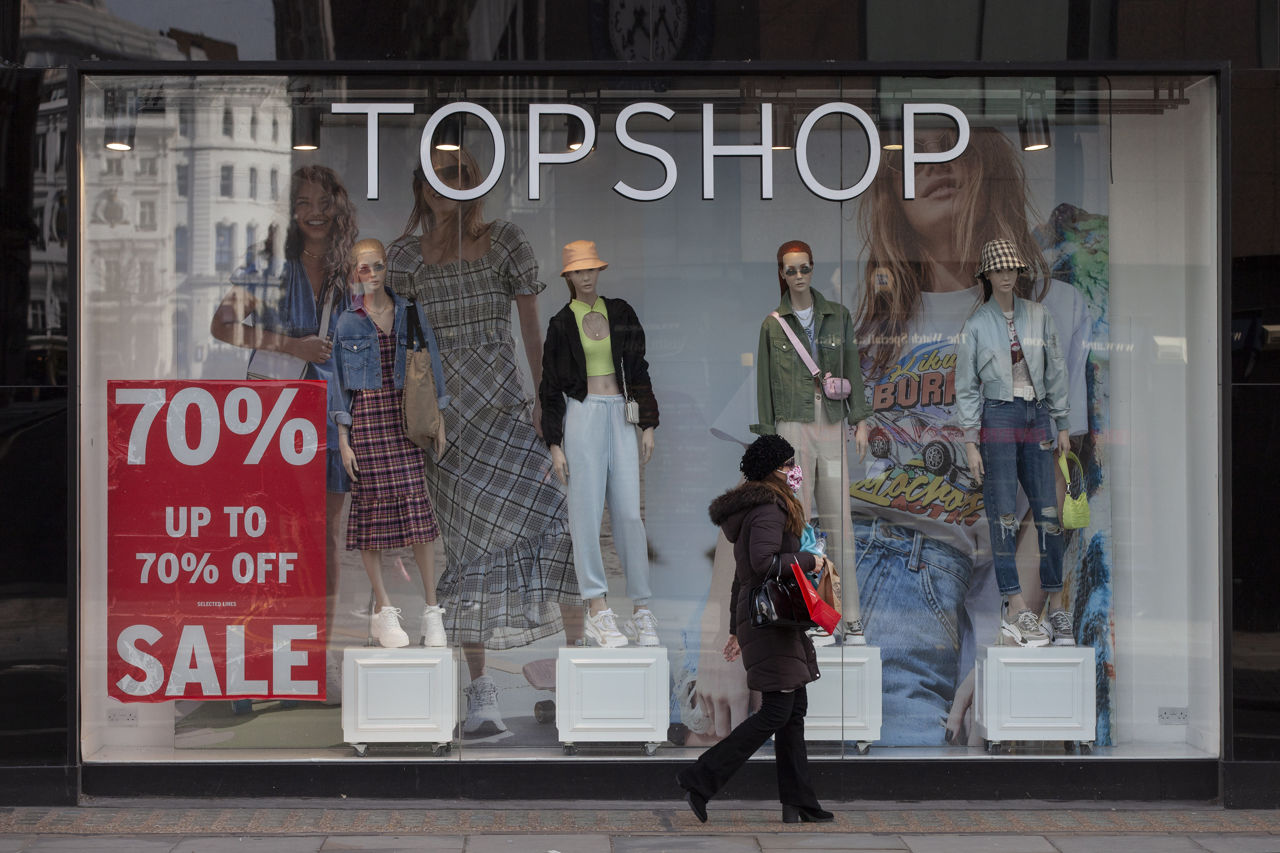
Above: Famous high street stores such as Debenhams and Topshop, already struggling, have gone to the wall since the onset of the coronavirus pandemic.
So, where did it all go wrong? It’s tempting to blame these ‘unprecedented times’ but, as Simon Gregory, Joint CSO of BBH, points out, “The sad reality is that Covid-19 accelerated a trend that was already happening on the British high street as many legacy brands lost sight of what is now truly important to the customer. Too much emphasis has been placed on shortening negative sources of difference, like cost of product and speed to market.” Ben Tan, Strategy Director at independent agency 2050, agrees: “You can't pile it high and sell it cheap when Amazon is a click away.”
Too much emphasis has been placed on shortening negative sources of difference, like cost of product and speed to market.
Other industry insiders blame substandard digital offerings. “As we’ve seen with the recent high street casualties, an immersive brand experience must be reflected online,” notes Vicky Bullen, CEO of Coley Porter Bell. “Making sure the brand’s core visual assets are fit for digital is an easy win, but there also must be a seamless customer experience that’s in line with the brand’s purpose, intuitive navigation and competitive delivery or click and collect options.”
While there’s an argument that many traditional bricks-and-mortar retailers have brought about their own demise by failing to move with the times, there is a huge issue beyond their control: the sky-high business rates that are levied on high street businesses which sit in stark contrast to the ‘light touch’ taxation of multinational online competitors, like Amazon.
2050 recently drew attention to the problem through its Signs For The Times campaign, creating bespoke ‘open’ signs and positive community messages for independent shops in London’s Columbia Road. The aim is to encourage customers to appreciate the vital role of the high street and support beloved local businesses by lobbying MPs for lower business rates. “Calls to rebalance the [tax] burden have got nowhere [so far], but the tectonic plates may be shifting,” says 2050’s Tan. “If there's one silver lining to the phenomenal debts we've incurred in the pandemic, it's that to pay it back we'll have to rethink how we tax.”
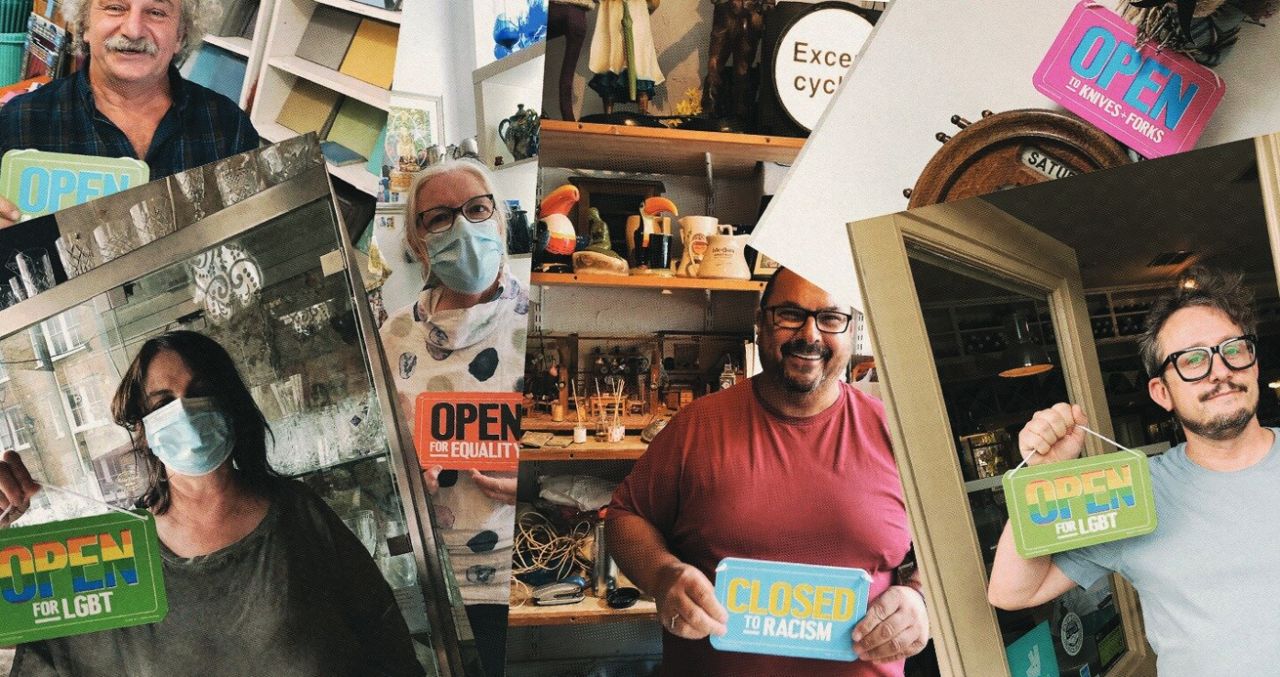
Above: 2050's Sign For the Times campaign worked with independent shops on London's Columbia Road with the aim of making the high street the heartbeat of the neighbourhood.
A tax rethink would provide a shot of adrenaline to the ailing high street, but the road to recovery depends on the actions of brands themselves over the coming months. Once lockdowns lift, consumers will undoubtably flock to physical stores to celebrate their new-found freedom and the ‘event’ of shopping. But how can retailers keep customers coming back once the novelty factor wears off?
That personal touch is something which small high street businesses do well, and which chain stores will need to emulate in order to thrive.
A huge advantage of physical shops over online transactions is the opportunity for personalised human interactions – something we value more than ever in times of isolation. “When I can’t get the potatoes that I need I'd rather a knowledgeable member of staff suggesting an alternative as opposed to Amazon suggesting a new Jo Nesbo novel,” says Lucy Moody, Strategy Director at BBH. Over the coming months, says 2050’s Tan, it will be important to invest in staff as brand ambassadors and relationship managers – “people who know their community and offer a personal touch with service beyond the product, be it inspiration, advice, fitting, ongoing servicing” – rather than shelf stackers.
That personal touch is something which small high street businesses do well, and which chain stores will need to emulate in order to thrive. It’s part of a bigger trend for localisation: Amazon’s net profit may have soared 84 per cent in 2020, but a wave of ‘buy local’ counter-movements also sprung up. One household name which is testing a more localised approach is Nike: its Nike Live concept stores in Tokyo and LA stock products on the basis of local data and demand, including apparel that is exclusive to those cities.
If more shops did more to design a distinct vibe, I think we’d see more people wanting to spend time on the high street.
Store design also plays an important part, reckons Adam Morrison, 2050’s Managing Director. Apple’s gleaming white temples are a case in point: they’re well planned and embody the brand’s ethos and values. “If more shops did more to design a distinct vibe, I think we’d see more people wanting to spend time on the high street too,” he says.
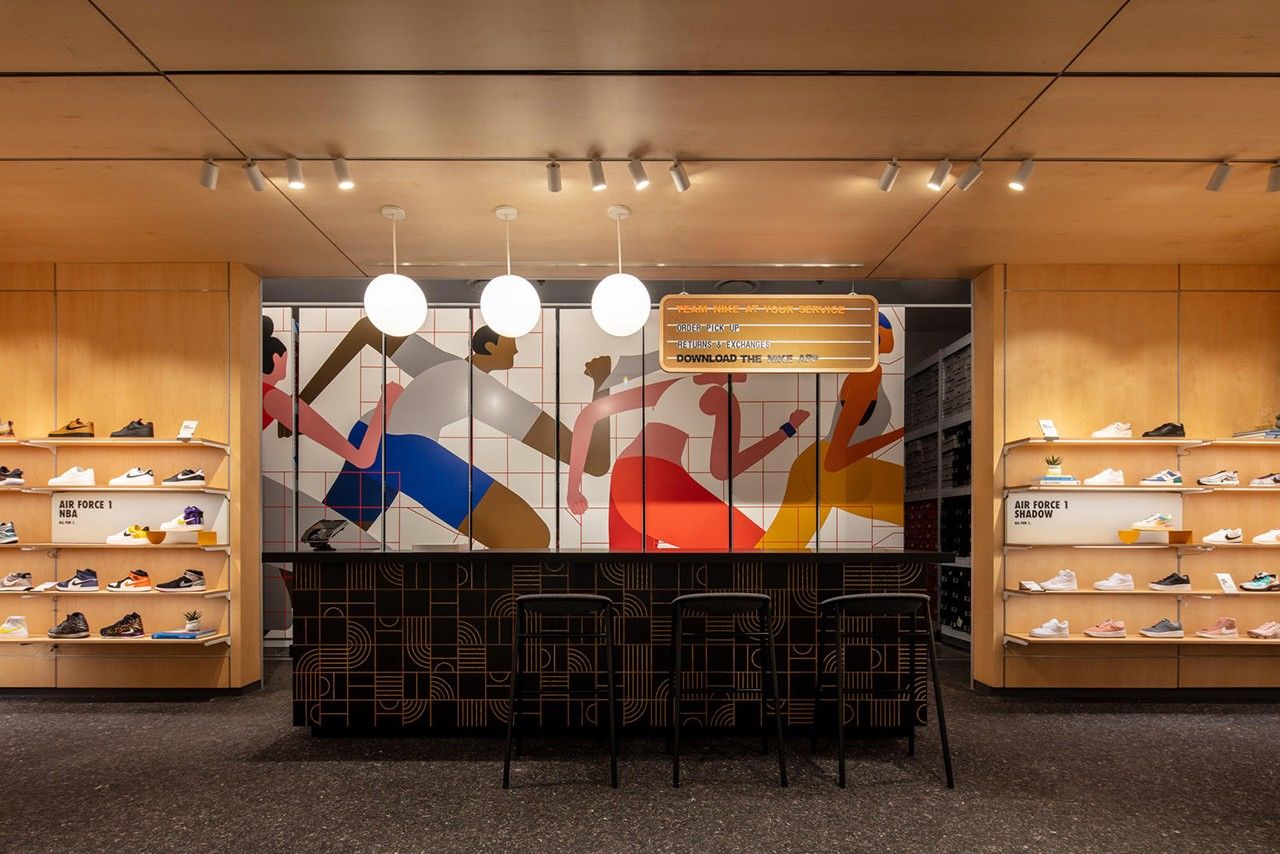
Above: Nike's Live's concept store in Long Beach, California.
In-store events – which Apple does brilliantly via its Today At Apple programme – also play into the idea of shops as entertainment and culture destinations. But forget late-night shopping or food tasting on sticks, brand need to think more laterally and creatively, such as cookery classes offered by kitchenware brand Miele, or a spa experience at the flagship store of natural beauty giant Lush.
Forget late-night shopping or food tasting on sticks, brand need to think more laterally and creatively.
Ultimately, physical stores are an opportunity to provide a truly immersive brand experience – real life social interactions, ‘multi-sensory theatre’, experiences and expert personal service – that can’t be replicated online, says Antony Parham, Executive Creative Director at experience design agency Imagination London. Think testing a new basketball on a real court in-store at Nike, or technical gait analysis for the perfect shoe at Runners Need.
Brands can engage customers “through all five senses”, adds CPB’s Bullen, from the feel of the product to the music on the speakers, the lighting, the scent and overall ambience to the staff and customer experience on offer. Shopping in near-darkness while being blasted by cologne and club tracks might sound migraine-inducing to many, but it’s a unique in-store experience that certainly appeals to the teen audience of US clothing brand Hollister.
Integrated in the bricks-and-mortar experience, innovative technology that genuinely adds value (and works flawlessly) will keep customers coming back, says Kam Phullar, lead strategist at digital marketing agency Feed. Gamification may sound like a gimmick but, done well, “it can elevate the in-store experience, promote products, and connect the customer to in-store-only value while bringing the brand to life in an engaging way.” Virtual shopping assistance or scannable QR codes for easy pickup are other examples of personalisation that could help increase long-term brand loyalty.
Above: Showfields, a store in New York, the self-billed ‘most interesting store in the world’, is where real world events meets rich online content.
All the while, the consumer shift to digital can’t be ignored and, as pointed out earlier, high street retailers that fail to replicate an immersive brand experience online will struggle. While shops remain shuttered, 2050’s Morrison suggests creating more intimate and social experiences, such as live shopping from one’s phone merged with a virtual network experience, to build communities online: “Then, when things open up post-Covid, invite that community onto the shop floor in interesting, immersive ways. Celebrate being open.”
One way of bridging the off- and online worlds is by hosting events that get streamed seamlessly onto the brand’s social media, suggests Imagination’s Parham. Across the pond, Showfields New York – the self-billed ‘most interesting store in the world’ – is leading the charge as a cultural hub where IRL events create rich online content, “in a mutual win-win for the digital and physical high streets.”
The high street is where people go to learn about their community and to feel a creative energy. To see creative entrepreneurship in action.
When looking the brand experience, BBH’s Gregory says it’s time to move away from the “simplistic” concept of bricks versus clicks and focus on the holistic whole. “We need to think of every interaction as an opportunity, not simply to fix the basics and remove friction but to build brand difference. Take my weekly chat with Dan the Tesco delivery driver who drops off my online order; he's the epitome of helpful and him asking after the baby means so much more than an email telling me what I bought last week. Now is the time to map out every touchpoint within your customers’ experience and ask yourself, is it truly enhancing what my brand stands for?”
Ultimately, only real action – both at an external policy level and within brands themselves – will resuscitate the high street. It’s vital that this happens, and not just from an economic perspective. “The high street is where people go to learn about their community and to feel a creative energy. To see creative entrepreneurship in action,” concludes 2050’s Morrison. “To remove that aspiration and that energy and replace it with digital screens and warehouses feels absolutely terrifying to me. It’s backwards, not forwards.”
)




 + membership
+ membership





